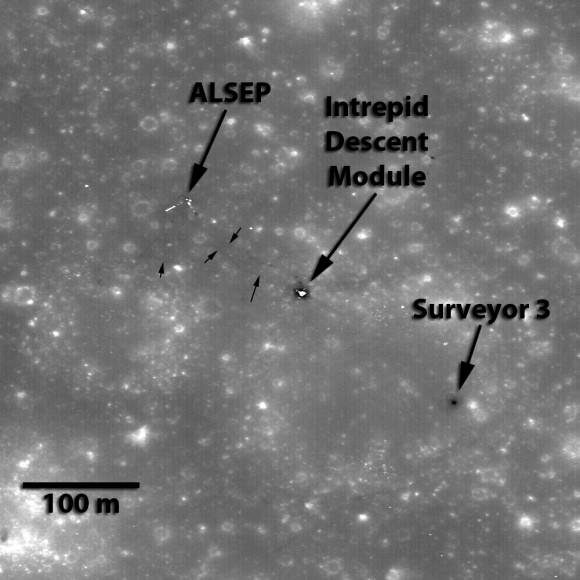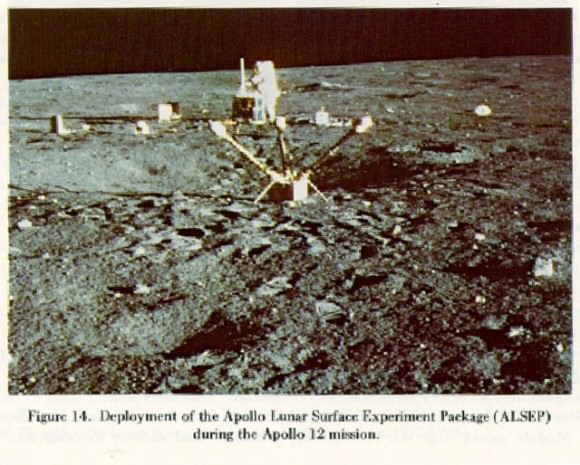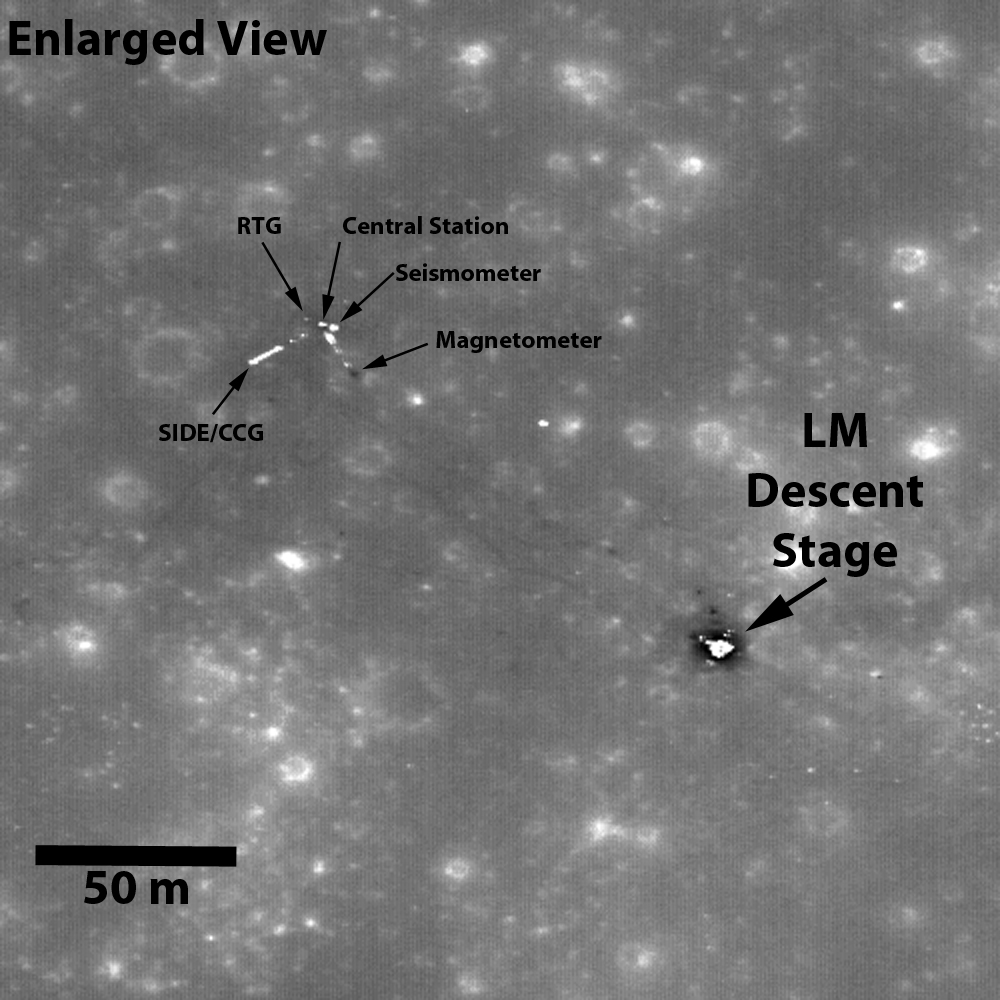Close-up view of Apollo 12 landing site from LRO. Credit: NASA/GSFC/Arizona State University
Wow! Just look at the detail visible in this image of the Apollo 12 landing site taken by the Lunar Reconnaissance Orbiter from its lower mapping orbit of 50 km above the surface. Compared to earlier images taken in September when LRO was in a higher orbit, the Lunar Module descent stage really stands out, as well as the Apollo Lunar Surface Experiment Package (ALSEP). Also visible are the trails left by spacewalking astronauts. From this and other LROC landing site images, it is clear that astronaut activity lowers the albedo, or reflectivity of the surface. Areas of heaviest activity have the lowest albedo, especially around the LM. NASA says this effect is most likely due to compaction of a very loose surface powder by the astronauts just walking around.

Here is a slightly more zoomed out version that includes the Surveyor 3 spacecraft. The Sun is very high in the sky (incidence angle 4°) for these images and shadows are minimized.
Below is an image taken by the astronauts as they set up the ALSEP instruments.

Source: NASA


Am wondering how much, if any, of the albedo reflectivity can be contributed to the descent/landing engines of the two spacecraft, or Intrepid’s ascent stage? Have other Surveyor landing sites been imaged at this resolution?
Interesting theory Aqua, I’d imagine that the vertical pressure on the landing area at descent, coupled with the lateral pressure exerted upon the surface materials would change the reflectivity enough to be evident from the LRO. The ascent engines on the other hand do not project their thrust directly upon the surface, the bottom portion of the lander stayed behind. I wonder about the chemical makeup of the propellants used, and their reactivity with the moon surface materials. Would that change the reflectivity in the lander area?
Just curious. Are these Apollo images purposefully taken or they just captured by LRO during its routine work ?.
If former is right why NASA wasting the time on these space junks. Or are they reiterating something.
Is this the best Nasa can do? I mean to me those pictures could be anything, they’re as credible as the pictures used by moon-hoaxers to prove their theories.
On google earth you have satellites orbiting at 250+KM capable of imaging a man walking his dog yet the LRO orbiting just 50km above the moon can only image unintelligible shades of gray and white?
Come on please we want to see the Eagle!!! Not a crappy blob… Its been 40 years…the tech has been there for a long time!
s0l, a lot of those close ups you see on Google Earth are taken from low flying airplanes, not satellites. Now if someone wants to fund a manned mission, I’m sure they’ll be able to walk up to the Eagle and take a few snaps 🙂
“a lot of those close ups you see on Google Earth are taken from low flying airplanes, not satellites.”
I don’t think Google had planes flying all over the world snapping pictures.
@ SeaFire, as it happens some mapping companies do.
But Google buys their photos AFAIU, they are into databases, not observations.
I’m sure Google is prepared to buy any actual low flying photos of the Moon that people can sell. 😀
“I’m sure Google is prepared to buy any actual low flying photos of the Moon that people can sell. :-D”
The whole idea of ‘flying’ in a vacuum begs for a new terminology.
It makes no sense to describe any activity outside of an atmosphere as ‘flying’.